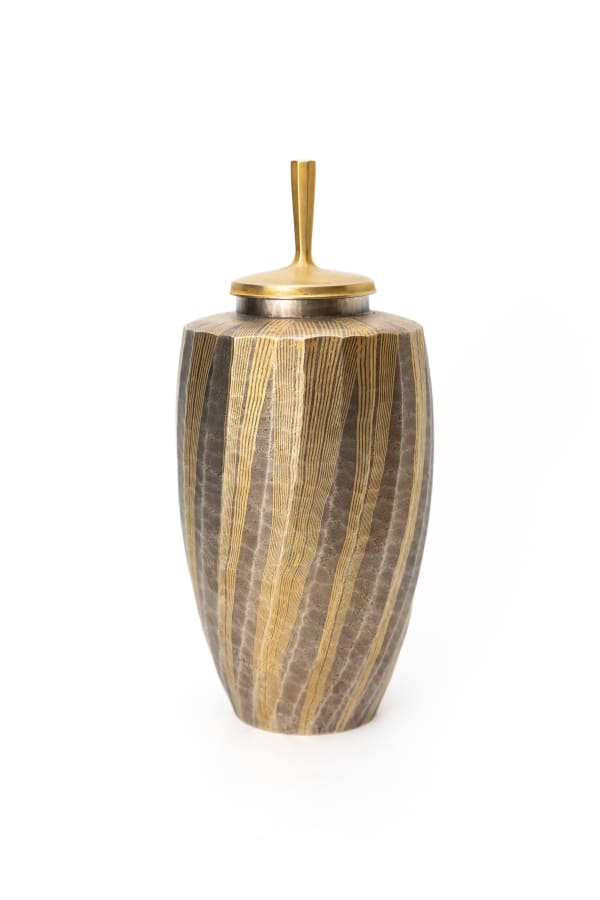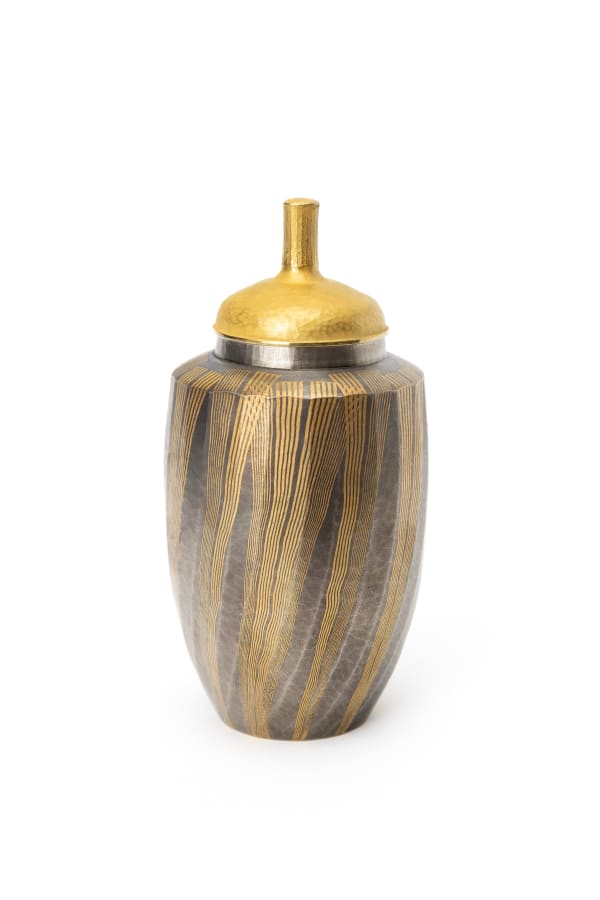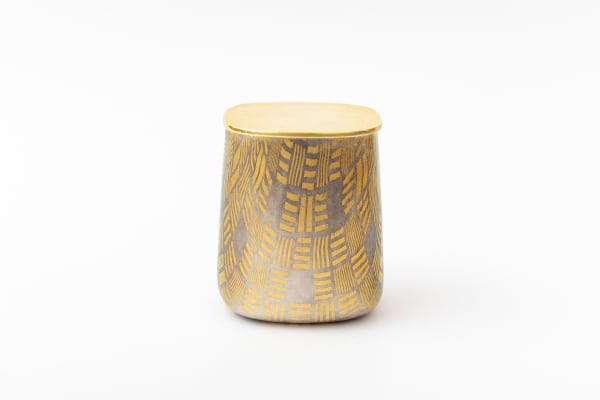-
 Together, brothers Hajime (b. 1948) and Yasuo Ishikura (b. 1953) have developed iron molding techniques unrivaled in contemporary Japanese functional art. The simple structure and iconic rustic-black skin are characteristics of the Ishikura brothers’ hammering techniques. Forged at their shared studio in Shiga prefecture, the metalworks of Hajime and Yasuo Ishikura were featured in international metal design exhibitions and publications in Germany and Japan.
Together, brothers Hajime (b. 1948) and Yasuo Ishikura (b. 1953) have developed iron molding techniques unrivaled in contemporary Japanese functional art. The simple structure and iconic rustic-black skin are characteristics of the Ishikura brothers’ hammering techniques. Forged at their shared studio in Shiga prefecture, the metalworks of Hajime and Yasuo Ishikura were featured in international metal design exhibitions and publications in Germany and Japan. -
-

Yukiya Izumita (b. 1966) is the leading ceramicist of Japan’s northeast Tohoku arts region. He uses origami paper techniques to construct layered sculptures that reflect the harsh seaside atmosphere. The visual lightness of Izumita’s tiered ceramics betray the salt- and iron-dense clay collected from the coastal beaches. In response to the unrelenting northern environment, Izumita’s works come to resemble the strange and natural bluff rock formations. Izumita is the recipient of the 20th Biennial Japanese Ceramic Art Exhibition’s Excellence Award and the Grand Prize at the Asahi Ceramic Exhibitions of 2000 and 2002. His pieces are in collections including the Yale University Art Gallery, the Philadelphia Museum of Art, Minneapolis Institute of Art, and Iwate Museum of Art.
-

Hirotomi Maeda (b. 1961) is a celebrated metalsmith whose decorative vessels are incomparable in the world of Japanese contemporary art. Equipped with a hammer and his hands, Maeda inlays alloy filaments and pounds the flat sheet metal into an oblong shape. A Professor of Fine Arts at Tokyo University of Arts, Maeda’s celebrated career includes top awards at national arts exhibitions, Japan’s Purple Ribbon, and honors including commissioned metalworks for Osaka’s Kenshoji Temple and to commemorate the ascension of Emperor Naruhito in 2019.
-
-
 Hiraku Sudo (b. 1979) is a contemporary metal craft artist from Kyoto leading in adapted metal techniques to create ingenious designs and contribute to repairing more than 1,500 temple and shrine decorations. His specialization in gold forging and engraving methods, and knowledge in classical motifs and tea wares, is the catalyst for the antique fabric textures recreated as metal caddies and containers. Sudo apprenticed in Kyoto until establishing his own workshop in 2003. His handmade works incorporate the craftsmanship of generations of Japanese smiths and textile artisans.
Hiraku Sudo (b. 1979) is a contemporary metal craft artist from Kyoto leading in adapted metal techniques to create ingenious designs and contribute to repairing more than 1,500 temple and shrine decorations. His specialization in gold forging and engraving methods, and knowledge in classical motifs and tea wares, is the catalyst for the antique fabric textures recreated as metal caddies and containers. Sudo apprenticed in Kyoto until establishing his own workshop in 2003. His handmade works incorporate the craftsmanship of generations of Japanese smiths and textile artisans. -

Shota Suzuki (b. 1987) studied metalsmithing at Tohoku University of the Arts, where he mastered skills that enable him to model that which he sees in the world. Drawing upon rich natural colors, Suzuki imagines plant life from brass alloy and other metals such as gold, silver, copper, and nickel. Hammering flat sheets and long fibers, Suzuki manipulates the hot metal with forging, soldering, and hand-sculpting techniques until the plant structure is a perfect mimicry of its living counterpart. Applying chemical reactions, Suzuki preserves the original and true color of the metal, challenging him to select and pair different varieties that capture the character of the living organism—for instance, the dandelion’s fluffy pappus is an ensemble of brass and nickel.
-



![Hajime and Yasuo Ishikura [I] 大作品, 2023](https://artlogic-res.cloudinary.com/w_600,c_limit,f_auto,fl_lossy,q_auto/artlogicstorage/ippodogallery/images/view/546410db2586e7a121fef04105a92f97/ippodogallery-hajime-and-yasuo-ishikura-i-2023.jpg)
![Hajime and Yasuo Ishikura [M] 壁掛け作品, 2023 Metal](https://artlogic-res.cloudinary.com/w_600,c_limit,f_auto,fl_lossy,q_auto/artlogicstorage/ippodogallery/images/view/ca8314f7afa1e404f5202d376a734f53/ippodogallery-hajime-and-yasuo-ishikura-m-2023.jpg)
![Hajime and Yasuo Ishikura [J] -1 床置き作品, 2023 Metal](https://artlogic-res.cloudinary.com/w_600,c_limit,f_auto,fl_lossy,q_auto/artlogicstorage/ippodogallery/images/view/aa77b6ce0b3c2b8b1d1ef51dd3d077c7/ippodogallery-hajime-and-yasuo-ishikura-j-1-2023.jpg)
![Hajime and Yasuo Ishikura [J] -2 床置き作品, 2023 Metal](https://artlogic-res.cloudinary.com/w_600,c_limit,f_auto,fl_lossy,q_auto/artlogicstorage/ippodogallery/images/view/ebbb04cc2082da108e84d6b977c40b60/ippodogallery-hajime-and-yasuo-ishikura-j-2-2023.jpg)

![Hajime and Yasuo Ishikura [N] キューブ作品, 2023 Metal](https://artlogic-res.cloudinary.com/w_600,c_limit,f_auto,fl_lossy,q_auto/artlogicstorage/ippodogallery/images/view/efb528532fdf2d943c349d914b0e2919/ippodogallery-hajime-and-yasuo-ishikura-n-2023.jpg)


















